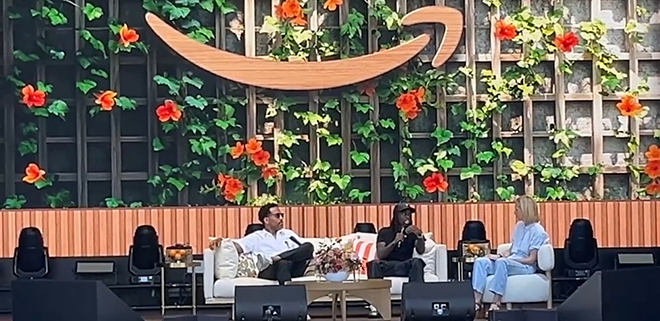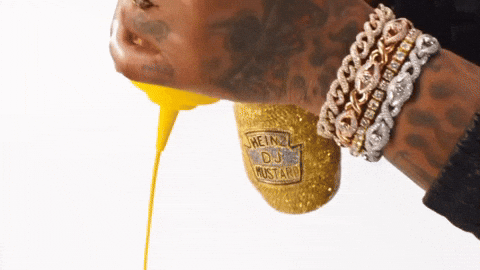
At Cannes Lions 2025, the real buzz wasn’t just about AI — it was about culture, community, content, and connection. Here’s how brands, content creators, and publishers can tap into human moments to truly resonate.
I know most folks who hit the Croisette this year left talking about how far AI has advanced and what agentic AI will do for marketing (don’t worry, we’ll get to that too), but my biggest takeaway from Cannes was something more human.
Culture. Community. Content. Connection.
That mathematical equation from an old social media playbook has been haunting me since Shingy shared his keynote at AdExchanger’s Programmatic IO in Vegas back in May.
“Culture eats strategy for breakfast. You can have the best strategy in the world, but if it doesn’t align with what people care about, it’s irrelevant,” he said.
It hit me then, and it hit me again at Cannes. Somehow, every conversation or session I slid into came back to one central theme: How can brands (and by extension, publishers) better connect with audiences?
Connecting with communities.
Connecting with cultural moments.
Creating compelling content and media that resonates and leaves a lasting impression.
Culture, Community, Content, Connection
At Amazon Port, I caught a conversation with one of Twitch’s top streamers, Kai Cenat, who talked about collaborating with celebrities. He said it was important they show up as their authentic selves.
“When people come through and enter my world, I just want them to have fun,” he said. “That’s my main goal. We act like we’re friends, just pulling up and having a good time with the supporters. That’s when you see people’s real personality — the version you don’t get on the court or stage.”
In the streamer’s live, the community (or chat) sets the tone. When it works, the result is deeper engagement and more trust. Brands love having a part of that.
It’s intimacy at scale. And when brands show up in those moments, they don’t feel like ads — they feel like connection.
At Inkwell Beach, Todd Kaplan, Chief Marketing Officer, Kraft Heinz North America, and Aki Spicer, Managing Director, Cashmere/Culture@Monks, EVP, Strategy Monks, spoke with Group Black’s Bonin Bough about how brands successfully tap into cultural moments.
When Kendrick Lamar shouted out his producer Dijon “Mustard” McFarlane on his top Billboard track, TV Off, the “MUATAARD” battle cry started a frenzy, giving rise to an outpouring of memes across social media platforms. That tag became part of a larger strategy already brewing between Heinz and Dijon.
The brand briefed agencies months earlier, building around Mustard’s culinary passion and the rising energy in the culture. He was named “Chief Mustard Officer,” and Heinz x Mustard launched a new product in the lead-up to the Grammys and Super Bowl. The collab was, of course, a hit.
Heinz listened to the culture. But they’re not the only ones.
In my interviews with Dan Reynolds, Senior Vice President, Marketing | Global Content, Media, and Partnerships at Hilton, and Jay Richman, VP Product & Technology at Amazon, the message rang loud and clear. The future of content and media isn’t just about AI or automation — it’s about creating real moments that resonate.
So what does that mean for publishers? Especially, what does it mean for the ad ops and rev ops pros tasked with keeping the engine running?
Let’s talk about it.
Culture Is the New Contextual
Hilton is doubling down on stories. Whether it’s content reflecting the real lives of their guests or creator partnerships rooted in shared values — the content is about resonance. It’s audience-first and human-centered.
“We don’t need to chase every trend. We need to know when our brand belongs in the conversation — and when we can add something meaningful,” Reynolds said.
Imagine that mindset applied to how you package your content, sell your inventory, or frame your media products.
For ad ops and revenue operations teams, this shift means packaging premium inventory around cultural moments, forecasting predictable traffic spikes, and unlocking new revenue streams.
You’ll get:
- Premium Inventory: Culturally relevant content drives higher CPMs and yields — packaging these moments as premium inventory is a win for both direct and programmatic sales.
- Predictable Forecasting: Building around cultural moments allows for accurate traffic forecasting and inventory packaging, making it easier to plan and sell high-value placements.
- Richer Data: Engaged communities deliver cleaner first-party data, enabling tighter audience segments and smarter contextual targeting.
- Brand Retention: Advertisers return when creative performs in culture — show you’re tuned in, and they’ll keep coming back for custom, high-impact packages.
- Diversified Revenue: Beyond display, branded content, sponsorships, and creator partnerships open up new revenue streams and reduce reliance on traditional ad formats.
This is what we mean when we talk about premium publishers. Publishers who understand the value of their audience and think audience first.
“You don’t get to be in people’s lives unless you’re bringing something of value. That value can be utility. It can be joy. But it better be real,” Reynolds said.
Amazon’s Richman agrees. He spoke with me about the idea of making advertising less interruptive and more additive to the customer experience. Connecting with consumers is strongest when the content feels natural and valuable. Advertising is content.
Adding AI to the Equation
In this equation, publishers or brands won’t add AI to automate a connection — it will deepen it. That’s whether you’re personalizing content journeys or optimizing creative across touchpoints. The tech is an additive, not the main ingredient.
“AI is helping us make better decisions, but we’re not using it to replace creativity — it’s a multiplier,” Amazon’s Richman said.
For Hilton, that means accelerating storytelling at scale, across different languages, regions and platforms. Reynolds’ team uses generative AI to translate brand assets into messaging that makes sense for local markets.
With AI, you get smarter metadata, better context engines, and tools that allow creators and publishers to respond to what’s happening right now — without a weeks-long production loop.
“AI is going to change how we produce, optimize, and personalize media at scale,” he said, “but the goal is still human connection,” Richman said. “AI just gets us there faster. It’s an engine for relevance. But you’ve got to start with people. With real context.”
And in case you’re still wondering whether AI will steal your job. Hilton’s Reynolds feels it will only make us all better at what we do. “It’s not about replacing people — it’s about replacing the parts of their job that get in the way of their best work,” he said.
So while the headlines at Cannes might’ve screamed “agentic AI” — the real action was in the humanness of it all. In the systems being built to listen better, to learn faster, and to respond more meaningfully.
That sentiment was echoed on the sidelines of the Croisette as well. As Grant Gudgel, SVP of Marketing at Verve, told me during his company’s happy hour at Chez Verve, “Last year was all excitement about what AI could be. This year, we’re actually applying AI in reality and segmenting the different technologies and how we use them.”
AI might scale content, but culture still sets the blueprint.
Editor’s note 6/25/25: An earlier version of this article omitted Grant Gudgel’s quote.
